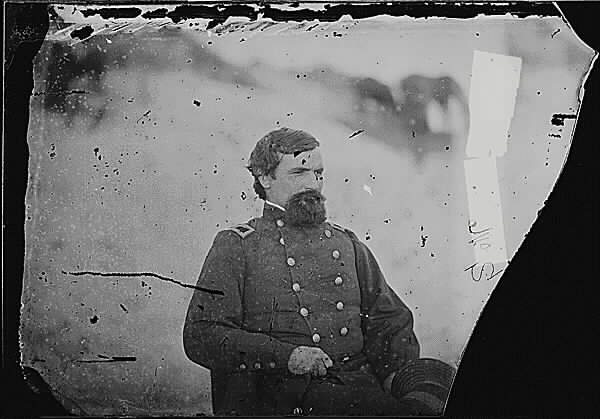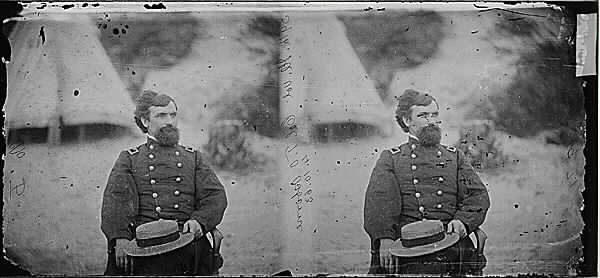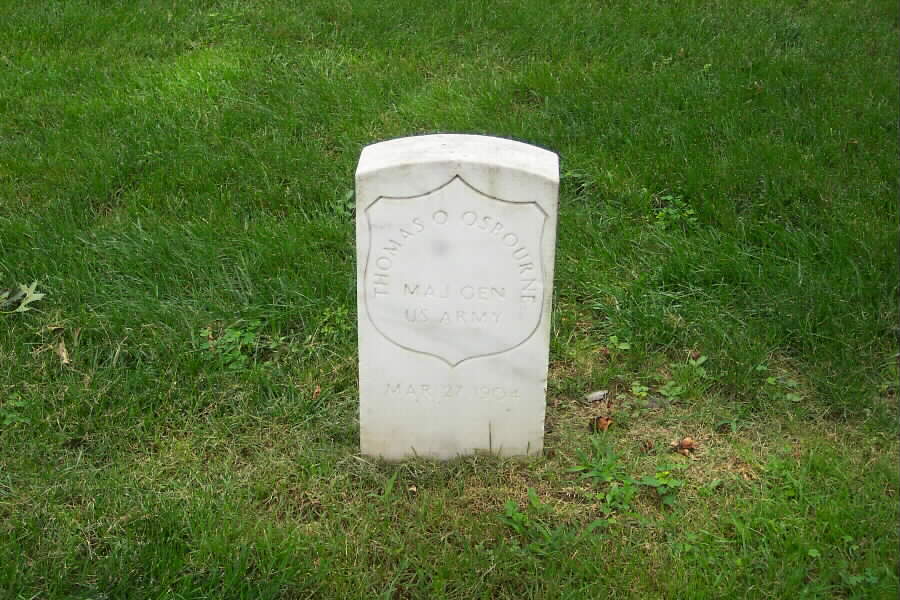Greetings. Enjoyed your web site, and the bit of General Osborn. I would like to offer a few suggestions: First of all, he is not the brother of Edwin Sylvanus Osborne. As Edwin was born in Bethany, Pensylvania, August 7, 1839, it is more likely that they are cousins.
General Osborn and his sister, my great great grandmother, along with other siblings were born in Jersey Township, Licking County, Ohio in 1832 and 1833. Their grandparents, Richard Osborn and his wife, arrived there in 1815 with their family, and several sons-in-law with their families (Osborn daughters).
General Osborn and his sister were the children of Samuel Osborn and Hannah Meeker Osborn, who died either at the time of the birth of my great, great grandmother, Almira Allen Osborn, or soon thereafter. (Three Osborn sons had married Meeker daughters in Ohio.) Samuel Osborn then remarried and moved first to Reynoldsberg, Ohio, and then on to Newton, Iowa. I have in my possession of number of the documents on General Osborn’s career — some signed by him — and all spell his name Osborn, as does he on those he has signed. Much of his memorabilia when up in smoke with his law office in the Chicago fire.
I have written to the Arlington Cemetery superintendent suggesting they correct the spelling of his name on the tomb stone, and even offering to pay for a new one. The reply was to the effect that it had been that way since 1904 and it would be historically improper to change it. This seems rather odd in that it is likely that some clerk simply misspelled the name.
Osborn had been a key organizer of the 39th Illinois, and commanded that regiment until he was wounded at Drewey’s Bluff in May of 1864. In August he checked out of the hospital with a bullet still in his elbow, went back to Illinois and campaigned for Lincoln’s reelection and returned contrary to doctor orders to command a brigade in the Army of the James. He was breveted major general when his brigade was the first to arrive on the Lynchburg Road as General Lee was attempting to break through General Sheridan’s calvary. General Grant was with the troops of the Army of the James at the time.
General Osborn was named Postmaster of Chicago after the war, confirmed by the Senate, but never took office as he differed with President Andrew Johnson. He later was elected Cook County treasurer and served as minister to Argentina from 1870 to 1882. If it would be useful I wrote up an article for the University of Ohio alumni newsletter, which I can send you. General Osborn was graduated from the University of Ohio, Athens, in 1854 and received a masters in 1857, having read law in the office of General Lew Wallace in Indiana.
I trust this information is of value to you, and I would be pleased to assist in any way in making the corrections as needed. If you wish further documentation I would be pleased to send it. Fred J. Martin, Jr.
PS: I get to Washington, DC, from time to time, as I am a vice president of the Abraham Lincoln Institute.
Thomas Odgen Osborne was born in the central Ohio hamlet of Jersey, August 11, 1832. He graduated from Ohio University at Athens (not to be confused with Ohio State University at Columbus), in 1854, and then read law in Crawfordsville, Indiana, in the office of the future Union General Lew Wallace. He began his law practice in Chicago in 1858, but with the outbreak of the Civil War turned attention to recruiting the 39th Illinois Volunteer Infantry, the grandiosely styled “Yates Phalanx” in honor of the Governor.
He was appointed Lieutenant Colonel of the of regiment on October 11, 1861, and Colonel the following January 1. It was his fortune in the first years of the war to take a rather limited part in a series of relatively unimportant theaters, much of the time in command of his regiment but also directing a Brigade of XVIII Corps. In May 1864, he lost the use of right arm in Benjamin F. Butler’s attack on Drury’s Bluff, and in the course of the siege on Petersburg commanded a Brigade of XXIV Corps, Army of the James. On April 2, 1865, as the Federals finally penetrated Robert E. Lee’s lines, his Brigade played major part in capture of Fort Gregg.
He was breveted Brigadier General and Major General of United States Volunteers and on May 1, 1865, was given the full rank of Brigadier General. He then returned to his Chicago law practice and was Cook County (Illinois) treasurer from 1867 until 1869; and served on the Board of the National Home for Disabled Volunteers; he then spent a year in Texas investigating depredations committed by Indians and white renegades based on the Mexican side of the Rio Grande River, and in 1874 was appointed Minister to Argentina. Six years later his efforts and those of his opposite number in Santiago, Thomas Andrew Osborne (no relation), brought about settlement of long-standing Patagonian boundary dispute between Argentina and Chile. The treaty was negotiated and ratified entirely by telegraph since no railroad existed at the time over Andes Mountains. He received the official thanks of the Argentine Government for his services. He resigned that post in 1885, but remained in South America, interesting himself in various railroad projects, one of which linked Paraguay and Bolivia.
In 1890 he retired from business. He died on a visit to Washington, D.C. on March 27, 1904 and was buried with full military honors in Section 1, Grave 312, of Arlington National Cemetery.
Also buried in this gravesite are:
His brother, Edwin Sylvanus Osborne, Major General, United States Army. Corporal, 8th Pennsylvania Volunteer Infantry, April 22, 1861; Captain, 149th Pennsylvania Volunteer Infantry, August 30, 1862; Major, 149th Pennsylvania Volunteer Infantry, March 2, 1864; Major General, Pennsylvania National Guard, 1870-78. Representative of Pennsylvania, 49th, 50th, 51st Congresses. Born: Bethany, Pennsylvania August 7, 1839. Moved to Washington, D.C. in 1898 and lived in retirement until his death there January 1, 1900.
Ruth Bell Osborne, the wife of Edwin Sylvanius Osborne. 1843-1929.


Michael Robert Patterson was born in Arlington and is the son of a former officer of the US Army. So it was no wonder that sooner or later his interests drew him to American history and especially to American military history. Many of his articles can be found on renowned portals like the New York Times, Washingtonpost or Wikipedia.
Reviewed by: Michael Howard

